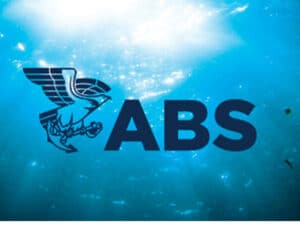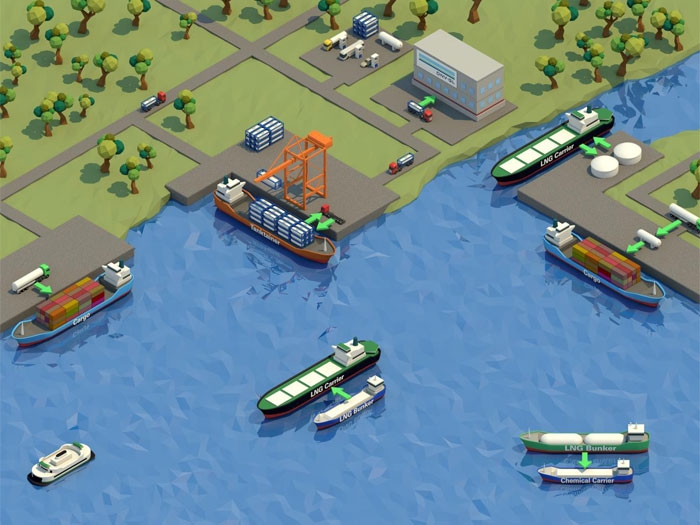
MARAD releases LNG bunkering study
Written by Nick Blenkey
SEPTEMBER 8, 2014 — The U.S.Maritime Administration has released a study on LNG bunkering contracted from DNV GL with the objective of analyzing existing LNG bunkering infrastructure, safety, regulations, and training, and identifying and recommending best practices.
In its introduction, the study says that, while LNG is an attractive fuel choice for many vessels, its use as a marine propulsion fuel is a relatively new concept in the U.S. and there are significant safety and regulatory gaps. In addition, there are several challenges related to the development of a national infrastructure for LNG bunkering.
Over the course of the study, DNV GL has made recommendations for specific audiences concerning standards and integration of LNG bunkering into U.S. maritime operations.
The study is divided into four sections that analyze the following topics: LNG bunkering infrastructure; LNG bunkering safety; regulations; and personnel training.
LNG Bunkering Infrastructure in the U.S.
Infrastructure development as well as vessel transition to LNG propulsion will be driven by tighter environmental regulations and price differences between conventional fuels and natural gas. Because the development of infrastructure is acutely dependent on the needs of specific ports and stakeholders, there is no single bunkering option.
To address key factors for the development of infrastructure at a port, four potential bunkering options were identified and evaluated. The bunkering options included truck to ship, shore to ship, ship to ship, and portable tank transfer.
Recommendations necessary to be considered for development of bunkering infrastructure should be focused on the following:
- Analysis of vessel types that utilize ports in the U.S. to determine what bunkering methods will be necessary. The analysis should include an assessment of select ports in order to determine the most viable alternatives given port-specific constraints. A component of the analysis should include identification of ports where LNG bunkering infrastructure would be in the national best interest as opposed to locations that are less desirable for security, safety, or other reasons.
- Evaluation of LNG bunkering site availability for increases in demand, considering transfer volume and frequency. The evaluation should include an optimization study that assesses the optimal infrastructure build-out to provide LNG bunkering for both high-frequency, low volume transfers and low frequency, high volume transfers more efficiently. Further evaluation would include a comparative risk assessment study of the safety aspects for large-scale truck transport to port locations vs. large-scale rail transport to port locations vs. natural gas pipeline and local liquefaction.
- Comprehensive analysis of road transportation safety and security risks from initial infrastructure build-out. Specifically, a traffic study is recommended which would assess LNG transport safety/security risks, investigate acceptable limits on national, regional, and local scales, and identify possible practical risk reducing measures. In addition, a detailed study of potential routes for LNG transportation (truck, rail, and pipeline) that avoid densely populated areas along with emergency response capabilities should be completed.
LNG Bunkering Safety
To address safety during bunkering, potential hazards associated with LNG bunkering, hazard distances, and risks associated with each bunkering concept were analyzed. In addition, relative risks and safety zone guidance were evaluated for three different bunkering concepts: Truck to Ship (TTS), Port to Ship (PTS) and Ship to Ship (STS). Individual risk was estimated and compared for the three different bunkering concepts.
In general, development and implementation of a regulatory approval process for LNG bunkering operations and associated facilities is recommended. The process should include a Quantitative Risk Assessment (QRA) that utilizes probabilistic risk acceptance criteria to assess the acceptability of the risk posed. Specific recommendations to promote safe LNG bunkering operations include the following:
- Completion of a port risk assessment at each port where LNG bunkering will likely take place.
- Development of a methodology for and completion of a quantitative port-wide navigational risk assessment that determines how changes in traffic character and frequency/density affect the safety and security of the public, workers, critical infrastructure, and commercial operations.
- Development of effective security and safety zone enforcement procedures to promote a safe environment for the port population.
Regulatory Gaps Related to LNG Bunkering
Although the use of LNG marine fuel is not a new concept, there exists a significant regulatory gap for bunkering and associated infrastructure operation. The establishment of uniform standards and guidelines for state and local lawmakers will allow for a consistent and predictable regulatory framework. Regulatory gaps were identified for LNG metrology, local vs. federal jurisdiction over bunkering operations, and a lack of framework for the review of potential risks related to LNG bunkering from non-self-propelled barges. One of the primary conclusions identified the need for greater clarity in regulations addressing simultaneous operations (SIMOPS).
Training Needs for LNG Bunkering
Proper training for crew and operators involved with LNG bunkering operations is critical for establishment and maintenance of safe practices. Existing national and international regulations associated with LNG bunkering operations were identified and evaluated. Recommendations were provided based on current efforts at the IMO for updating the IGF (The International Code of Safety for Ships using Gases or other Low-Flashpoint Fuels ) code, ISO (The International Organization for Standardization ) Draft TS 18683, and DNV GL Competence Related to the On Board Use of LNG as Fuel standard No. 3.325 that recommend safeguard criteria for best practice of LNG bunkering. A training scheme for crew and first responders has been provided that addresses basic, advanced, and site-specific recommended practices.
Read the study HERE





Leave a Reply
You must be logged in to post a comment.